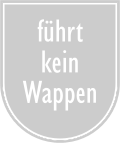Warrenzin
| coat of arms | Germany map | |
|---|---|---|

|
Coordinates: 53 ° 54 ' N , 12 ° 57' E |
|
| Basic data | ||
| State : | Mecklenburg-Western Pomerania | |
| County : | Mecklenburg Lake District | |
| Office : | Demmin country | |
| Height : | 19 m above sea level NHN | |
| Area : | 29.05 km 2 | |
| Residents: | 372 (Dec. 31, 2019) | |
| Population density : | 13 inhabitants per km 2 | |
| Postal code : | 17111 | |
| Area code : | 03998 | |
| License plate : | MSE, AT, DM, MC, MST, MÜR, NZ, RM, WRN | |
| Community key : | 13 0 71 157 | |
| Community structure: | 4 districts | |
| Office administration address: | Goethestrasse 43 17109 Demmin |
|
| Mayor : | Hartmut Kussmann | |
| Location of the municipality of Warrenzin in the Mecklenburg Lake District | ||
Warrenzin is a municipality in the north of the Mecklenburg Lake District . The community is west of Demmin . It belongs to the Demmin-Land office , which has its administrative headquarters in Demmin. Until July 1, 2004 Warrenzin was part of the Borrentin office .
Geography and traffic
Warrenzin is about five kilometers west of Demmin. The district of Warrenzin, which is in the middle of the municipal territory, is located directly on the federal road 110 . The southern border of the municipality forms the Peene .
The districts of the municipality are Beestland, Upost, Warrenzin and Wolkow.
history
Around 1900 the former communities Upost, Warrenzien and Wolkow belonged to the Mecklenburg levy district of Malchin, while Beestland belonged to the Pomeranian district of Grimmen of the Kingdom of Prussia .
At Wolkow and Upost there are two Slavic castle walls in the municipality: the Hohen Wall and the White Wall on the banks of the Peene .
Beestland was first mentioned as Bisladon in 1178. In the 14th and 15th centuries, the von Hobe family owned the place and estate.
A former Slavic castle is located in the Beestland Forest near Beestland . Allegedly a "witch" was burned here in 1675. This Wallberg is also popularly known as the Bear Castle . The castle was built on a natural mountain, only the slopes were artificially made steeper.
The place was incorporated into Warrenzin on July 1, 2003.
Upost was mentioned in 1178 as a Turpuriste in a document from the Schwerin bishop Berno . Therein the place was mentioned as assigned to the Dargun Monastery . The name of the place Turpuriste means ax handle .
Lindenberg Castle once stood at Upost. In 1845 there were 15 houses in Upost with six farmers and eight Büdner jobs, a school and 194 residents. After the Second World War , new farm houses were added. The school closed in 1954.
The Upost passage grave was excavated and restored by Ewald Schuldt in the 1960s .
Upost was incorporated into Warrenzin on July 1, 2003.
Warrenzin existed as a farming village since the 12th century. It was the domain of the Duchy / Grand Duchy of Mecklenburg-Schwerin. Tenants were u. a. the families Bühring (around 1800), Ebbeling (from 1818) and Blank (from 1842). The manor house, renovated in 2000, dates from around 1850.
Wolkow was first mentioned in a document in 1178. As in Beestland, the von Hobe family had been landowners here since 1560, with a few interruptions. The former farm buildings of the estate were demolished in 1946/47 in order to obtain material for the construction of houses for the new farmers .
Wolkow was incorporated into Warrenzin on July 1, 1950.
politics
Coat of arms, flag, official seal
The municipality has no officially approved national emblem, neither a coat of arms nor a flag . The official seal is the small state seal with the coat of arms of the region of Western Pomerania . It shows an upright griffin with a raised tail and the inscription "GEMEINDE WARRENZIN * LANDKREIS MECKLENBURGISCHE SEENPLATTE".
Attractions
- Warrenzin manor from after 1850 with central projection
- Beestland manor house with avenue
- Low German hall house in Upost
Web links
Individual evidence
- ↑ Statistisches Amt MV - population status of the districts, offices and municipalities 2019 (XLS file) (official population figures in the update of the 2011 census) ( help ).
- ↑ a b StBA: Changes in the municipalities in Germany, see 2003
- ↑ Main Statute, Section 1, Paragraph 2 (PDF).




